Is the Pen Mightier Than the Keyboard?
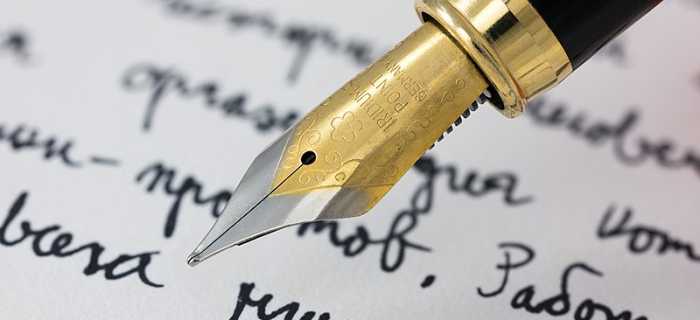
In one’s mind, stories are often a weightless, windblown force. They are half-ideas, plot fragments, the sunned profile of a character’s smile. This is where any story begins–the molten metal of endless possibility, not yet bound by shape or form. Forging this form, however, is a task met with equally endless tribulation. Piecing these fragments together is careful work, frustrating to hands that don’t quite know the best path for such piecing. Every writer has been there. A sentence that just doesn’t flow. A description that fails to truly communicate the image one so clearly envisioned in their mind. Before it even touches the page, writing is a mental battle between the beating heart of a story, and the winding path braced to make this beat heard. But for all that occurs within the mind in forging a story, where does such a struggle echo in the real world? How does this struggle echo not only in what an author writes, but in how they write it?
At the end of the day, such a choice lies in the hands of individual discretion. There will always be constraints of circumstance; afterall, Shakespeare didn’t quite have to make the particular choice between a ballpoint pen and a favored quill. Though, as a whole, for all the choices a writer makes–for all the unknown bends in a story yet traveled–the mode one uses in writing their way might be seen as a focal decision in itself. One that is based on preference, mood, and the writer’s own will–not simply the wills of the characters they write. The author’s choice of pen is akin to a knight choosing their mount, armor, and blade, before a quest. Deciding between writing by hand or keyboard may seem small, but to the writer, it can be anything but. It is more than simply asking how one will write a story; it is a matter of how one will equip themself to scribe that story’s every move, expected and not. The material mode of writing, whether by type or hand, is often the unseen and unsung joint for swinging a story into something real: a key choice that must weigh the efficiency, creativity and liberty it affords the writer along the long path to storyforging.
Efficiency Through Type
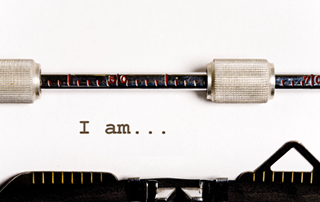
One of the first questions a writer must ask themself in deciding their literary mode is how deeply they value speed. A certain tortoise and hare have long taught the value of taking things slow, a lesson equally applicable to the world of writing as any other facet of life. Though in a fast moving world, one must make room for exceptions–just as the pen and pencil were asked to make room for a new mode of writing in the 16th century. Typing and writing are loaded with their own unique set of connotations. Writing encompasses the entirety of storytelling on the page–it drips with creativity and trials and triumphs. Afterall, most storytellers would refer to themselves as writers rather than typers–even if every work they’ve written started as a word document. Typing, on the other hand, seems to have maintained an air of clericality. This is likely driven from the typewriter’s earliest impression on the social scene, those that denoted it as “an essential tool for many businesses” where quick logging was key: administrative work, bookkeeping, court transcribing (“Production on the…”). Even following the inescapable rise of the computer in the 80’s–even as typing has worked its way into the faculties of current daily life–something about typing maintains officiality. This association is likely driven from claims such as that of the New York Tribune in 1901, naming the revolutionary typewriter an “almost sentient mechanism” (“Production on the…”). But the name that typing has made for itself over time–especially in today’s pallet of writing tools–spans beyond mechanics.

Type’s Topical Advantages
The very uniformity and efficiency focal to typing’s clerical identity are also what make it very appealing to certain writing–and storytelling–approaches. This is a shift that has encompassed both a change in how typing has been used, but also in its view to the wider public. Efficiency is the core of this device–of typing as a whole. It exudes speed without sacrificing legibility. It allows even the messiest ideas a clean presentation through uniform font, size, and spacing. Creating a story can be anything but a straightforward, linear process–the complete opposite of neat, type print. Yet typing allows for the quick capture and easy reorganization of even the smallest details: a spark of a trait, a plot twist, a keystone image. For many, typing is the only match to a racing mind–to a story that wishes to be told on its own time, whether the author can keep up or not. Afterall, as Gabriel Robare of the Daily Princetonian notes, typing is simply the “far faster” mode of writing when “the average American can type 40 words per minute, but can only handwrite 13 words per minute” (Robare). And in a world where time refuses to slow for anybody–any author–such speed is an essential ally. With typing, quick jotted ideas can be easily rearranged–copied and pasted into something whole. With the right story burning to be written, whole pages can fill in a matter of moments–an encouraging sight when there’s long trails of story to trek. And while handwriting is by no means molasses slow–especially when it comes to modes such as shorthand or cursive–typing’s speed is hard for handwriting to match. Afterall, this form of writing even uses two hands instead of one!
Modes Condusive to Creativity
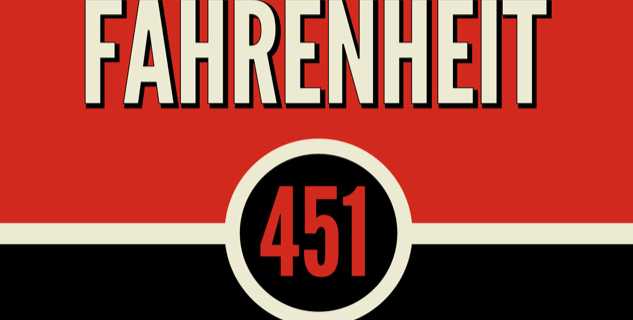
Handwriting, in contrast, may lend itself more kindly to a second consideration of methodology: creativity. In no way can one say that typing is void of creative potential. Afterall, one’s method of writing is just that, one method. It is up to each writer to decide how they use it, and how useful it is to their writing style. Ray Bradbury’s Fahrenheit 451 was born through type–a fast mode made even faster by the fact that every hour of type cost 10 cents (Bradbury). Though in the end, it was this speed–this pressure–that formed the diamond of Bradbury’s revered dystopian novel. For others, however, such pressure and speed are not the kind of conditions their story needs to grow. Every library, in this sense, is a garden–each story equipped with unique finnick and needs. Some do well under the efficiency that coaxed Bradbury’s stories to bloom. Others, however, find their creativity in other ways. As was previously established, handwriting is simply slower. But why is this? The reasoning lies in more than wrist cramps and dull pencils. According to Nancy Olsen of Forbes Magazine, “handwriting forces us to slow down and smell the ink” (Olsen). Handwriting’s lack of extreme speed might be cause to deign it as less efficient, though such slowness might also be this mode’s greatest strength. In the end, it takes a long time to get to know a story. It is a dance between character and writer–both of which might not know each other fully, even as words find their footing on the page. Yet the slowness of handwriting might be an asset in supporting the individual pace of a writer’s creativity–in learning to dance by one’s unique storytelling tempo.
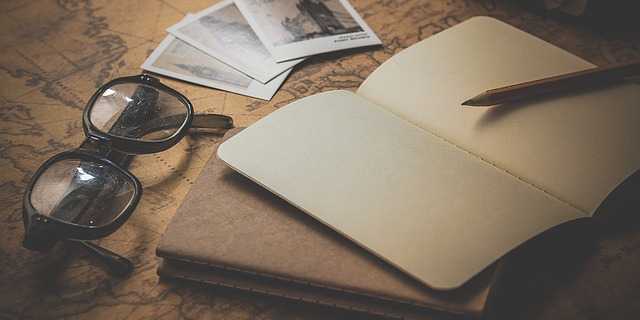
Handwriting’s Hand in Storytelling
Something special happens to the brain with a pen and pencil in hand. Even if a story stubbornly refuses to happen, even if it may feel as though one has reached an insurmountable impasse of writer’s block, handwriting slyly asks the brain to come alive in ways one might not even realize. Virginia Berninger of the University of Washington notes the relationship between keystrokes, and the artful strokes necessary for crafting every handwritten letter. As outlined in Gwendolyn Bounds’ article: “How Handwriting Trains the Brain,” Berninger’s study claims that the very “sequential finger movements” of handwriting activate “massive [brain] regions involved in thinking, language and working memory” (Bounds). In short, handwriting is hard work that spans beyond the hand. The very motion of this mode tugs on all the stored up knowledge one has of language–the glimpses of personal memory one might be reforging into some new tale. Every story is a piece of the writer: a mosaic of imagination and dreams grown from very human roots. The Hunger Games sparked from a simple night of flipping channels on Susan Collins’ tv–from overlaid glimpses of reality television and modern war footage. Hogwarts was born on a delayed train to King’s Cross Station. Some of the most extraordinary stories we cherish are born of ordinary moments. And while every author has their preferred mode of organizing these moments, handwriting is especially keen on helping to mine them from one’s memory.
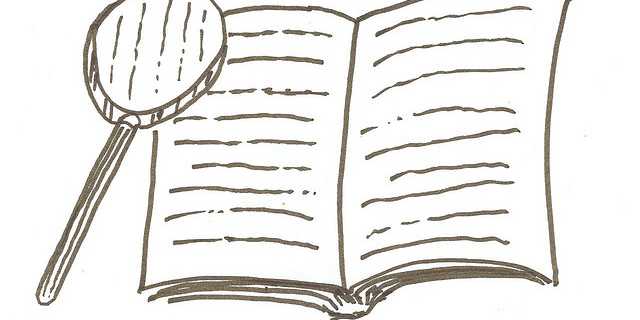
Writing One’s Way to Mindfulness
Every writer often carries more of their story than they realize. Sometimes it simply takes putting a word down–regardless of whether one knows which will follow–for a plot to spark. And in this sense, every handwritten word is akin to a step on this journey–fully known or not. Nancy Olsen further states that “the mere action of writing by hand unleashes creativity not easily accessed in any other way”–that handwriting in itself is almost a form of “meditation” (Olsen). A stalled story can be one of the most discouraging and frustrating things in the world–a stagnant lifeblood, a dammed stream. In these moments, the strained writer might wish for nothing more than a hammer to break the blockage down. Though instead, one might simply require an open hand–for some, one that holds a pencil or pen. Olsen notes that the act of handwriting is often associated with a sense of “mindfulness,” a delicate awareness, a willingness to pause and listen–even when one struggles to refind the melody of their tale (Olsen). Such mindfulness is the glue between slow pen strokes, between half crammed margins and headers.
Handwriting, beyond a mode of storytelling, can act as a mode for how many authors get to know their stories when they insist on remaining unknown. Its unique engagement of the brain tills the soil for new ideas, new discoveries–some buried in old memories, others forged by the act of exploring them. Writing by hand is by no means a cure all for a writer’s confusion. No pen can come up with the magic hook of the first chapter, the clean bow conclusion of the last. But the exercise of writing by hand is largely seen as a way of learning to reach a little farther, dig a little deeper, for those hard to find words. More than a method, it is a way many authors get to understand their tales more deeply–find more in their spark of story than they ever dreamed. It it important to note that typing is not, and never has been, incapable of such creative exploration. The creative processes experienced through each mode may simply look, and feel, different–whether by the expressive faculties they offer, or how a writer uses them. Amid how some writers may best tell their stories with typing’s organized speed, others may find that handwriting’s meditative nature is the route through which they can truly find their plot’s roots.
Liberty Above All
Between both creative and efficient appeal, the greatest consideration many turn to in deciding their literary mode is the liberty it offers. But this is also the most difficult trait to peg–the most difficult to generalize–because it belongs solely to each writer. Both handwriting and typing offer different degrees of freedom, different levels of accessibility and comfort. Tied to the values listed above, and many not named as well, liberty here simply means how well each mode facilitates the author’s free expression–something that all authors will never have exactly in common. For some, efficiency is freedom; for some, a blank document is an open highway, one’s fingers the new tires of a story eager to be told. In type, there is no weight of eraser marks–no shortage of paper or ink. It is a cosmos waiting to be filled–paired with a mode of writing that can be especially well-equipped to field each orbiting idea. Life is messy. Stories are too. Even the most well thought tales often struggle to translate into words–the right words. But for some, typing is the most efficient way to capture each fragment. It cuts through the simple inconveniences of other modes–spellcheck, resizing and restructuring a mere click away. And especially in today’s world, one more technologically dependent than ever before, typing has only made itself more prevalent and accessible. Any word document has the potential to harbor a story–and each writer the chance to fill it quickly with a flurry of keystrokes. Typing is direct, fast–and in this sense, freeing.

For others, writing flows more freely through ink and graphite that it can through a cursor. For others, handwriting is simply easier than type–whether by preference, or in how well it supports the creative stream. Some find peace in the orderly lines of Times New Roman, double spaced–though what is orderly to some might seem overly rigid through different eyes. As the age of typing began, so did a new definition of what first drafts could look like–where a story could begin. Though nothing in typing can replace the curve of quick flowing sentences–the staunch, boxy nature of words slower to come. Handwriting allows the sprawl of snowflake letters to come exactly as pictured–no two alike–to match the emotion that brought them to life. There is something very human about the relationship between pen, paper and palm. It’s a kind of magic, to wield one’s pen, a leaf thin page, and paint it with worlds of story. And there is nothing to say that typing can never allow the birth of such worlds. Though there is also something to be said for half jotted notes on the side of the page–doodles of scenes, twice circled lines, the very image of what it is to write one’s dreamed up tale into something real. Something perfect–all the more so for its smudges, creases, half erased notes. Something miraculous about writing that first line, and holding it in one’s hand. For just as many, this is writing in its most free form.
A Balance in Braving the Gap

Ultimately, how a writer writes is like a kept secret between the author and their piece. It is a dance of fingers through keys, a twirled wrist alongside an ink veined companion. An act of trust in passing one’s wish of a tale through such mortal, ordinary means. But is this not the way of writing? The axis struggle of every author, to try and paint their dreams into reality with the human tools available to us. At the end of the day, these means are steadfast and quiet soldiers–trading their voice for that of an author desperate to make their writings real. Perhaps quills are meant to wear, perhaps keys are meant to grow sticky and brittle. Perhaps pencils are meant to dull–because they have given their whole selves to the story they bear. Perhaps, not unlike an author, every mode of writing gives itself away in some way–gives itself to a story they believe in. I sign off from having written this article wholly in type, though I can’t help but wonder how different it might have been had I written it by hand. But in the end, typing and handwriting are two paths diverging towards the same peak–the same glistening hope every writer holds in venturing their own tale. The hope that their tale might touch a life, open an eye, awaken a dormant heart.

Efficiency, creativity, liberty–all valid considerations for a writer trying to bridge this hope, trying to weave their own story amid the many once upon a times of this world. All considerations that stand not at odds, but side by side. Carefully weighed, keenly chosen, and someday wielded in forging a story. Nobody can truly say if the pen is mightier than the keyboard. Perhaps the better question is, how wonderful is it? How truly wonderful that a couple keys, a bit of ink, can bring whole dreams to life? How absolutely and truly wonderful is it that the beating heart of a story can turn these simple means into something akin to Excalibur’s legend? How absolutely and truly and undeniably wonderful to piece a story together however one can–all for the hope of creating something that lasts far longer than a sweep of words over fragile paper. A sweep of story over the heart of a reader the author may never know, and who may never know them, but who will know the story unknowingly connecting them both–even as the means fade like ink amid sun and time.
Works Cited
- Bounds, Gwendolyn. “How Handwriting Trains the Brain.” The Wall Street Journal, 5 Oct. 2010, www.wsj.com/articles/SB10001424052748704631504575531932754922518#articleTabs%3Darticle. Accessed 15 July 2023.
- “Fahrenheit 451.” American Writers Museum, exhibits.americanwritersmuseum.org/exhibits/ray-bradbury-inextinguishable/fahrenheit451/#:~:text=Ray%20wrote%20the%20first%20draft,it%20is%20illegal%20to%20walk. Accessed 15 July 2023.
- Olsen, Nancy. “Three Ways That Handwriting With a Pen Positively Affects Your Brain.” Forbes, 15 May 2016, www.forbes.com/sites/nancyolson/2016/05/15/three-ways-that-writing-with-a-pen-positively-affects-your-brain/?sh=467655e05705. Accessed 15 July 2023.
- “Production on the Sholes and Glidden Type-Writer Began.” Library of Congress, guides.loc.gov/this-month-in-business-history/march/typewriter-productionbegan#:~:text=In%20the%20U.S.%2C%20one%20of,patent%20in%201878%20US%20207%2C559%20. Accessed 1 June 2023.
- Robare, Gabriel. “On Handwriting.” The Daily Princetonian, 7 Sept. 2021, www.dailyprincetonian.com/article/2021/09/handwritten-versus-typed-classnotes#:~:text=Some%20students%20can’t%20handwrite,handwrite%2013%20words%20per%20minute. Accessed 1 June 2023.
- “Timeline of Computer History.” CHM, www.computerhistory.org/timeline/computers/. Accessed 1 June 2023.
What do you think? Leave a comment.






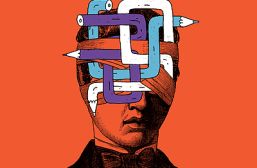
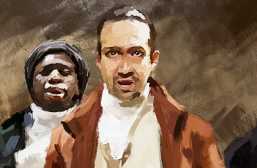

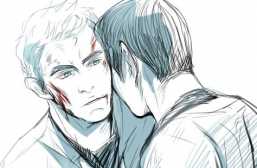

Hello the artifice
thank uuuuu so much do these inspiring articles. One of my best moments is when I receive a notification post from you. I truly appreciate your works.
Best regards
Hasnae
Congratulations on making the lineup! As always, I was glad to help with the revisions. I also wanted to say again (I can’t remember if I mentioned it): As a person with cerebral palsy who can only type, thank you so much for discussing the efficiency and advantages of typing in the article.
There have been many times I wished I could handwrite because of how people respond to it (“It enhances creativity,” and similar arguments). I can’t tell you how many beautiful journals I’ve looked at with regret and longing in bookstores. But as you wrote, “with a story burning to be written,” writers cannot quibble over the method. So thanks for reminding me there is beauty in typing *and* handwriting, and that both are valid. It reminds me of something Augustine said: “In essentials, unity. In nonessentials, liberty. In all things, love.”
The freedom to rearrange text instantly is type’s most important trait for me.
Writing with a good quality nib, almost, makes it a pleasure.
I’m just waiting for the perfection of voice recognition software. Speech came before handwriting and it’s still better.
A helpful advantage of pen and paper is that they cannot be used to watch YouTube or check Facebook.
Face it, how many people actually still write a letter as opposed to typing it?
There is no denying the diversity and speed of the keyboard gives a slight advantage in the academic world. However you will need more than a keyboard to keep up with modern day media spread knowledge.
When I saw the exhibition on Shah Abbas from Iran/Persia in London a few years ago, what struck me was the line used in calligraphy was reflected in the beautiful miniatures that were exhibited.
This is a different culture but as a retired teacher I feel that the hand eye and brain coordination is something that is very important.
Many skills get lost, but somehow to lose this would be a huge mistake.
I still write letters with a fountain pen, and try to write as many letters as possible. However, I have to admit that I do only a fraction of drafting for my novels by hand, mainly when I’m travelling and don’t have access to a computer. One reason for drafting a lot on screen is that I can see the shape of the words and paragraphs as they woulkd be on the printed page.
What I have done recently, though, is to get a bigger notebook (as in paper notebook) so that anything I do draft longhand will look more like the printed page. I am moving back towards cursive for everything.
My handwriting is terrible, but it’s always better if I use a fountain pen instead of a Biro. (It’s legible, for one thing….) I have various personal theories for this, but does anyone else find the same thing?
Agree. The tip of Biro feels rather slippery. Pencil is the most comfortable writing tool for me.
Yup…with a biro my handwriting looks like a psider on LSD fell into some ink and madly ran around the page. With a fountain pen, its legible. I assume it is because writing with a fountain pen is slower and therefore encourages better hand/eye co-ordination and also greater time for deliberation over words and layout of the writing.
I see the disappearance of handwriting as a generational loss of fine motor skills that are revealed in fewer shirts and coats with buttons, pull on shoes, less home cooking, etc.
I agree with you on this. Handwriting is just another skill that one may or may not enjoy but it does help develop useful fine motor skills. There seems to be an urge to rubbish handwriting by those who struggled to master it, which is a shame. Personally, I have found it has been useful to me in the past and predict it will continue to be so in the future.
We need handwriting for those all to frequent moments when technology fails us, if nothing else.
As a technophile, I appreciate the ability to use the keyboard, and word processing s/ware programmes to refine and edit my written material (though sometimes, my typos make it hard to believe…but that’s mostly due to fat fingers).
That said, I also regularly use a traditional fountain pen, with ink cartridge, to record all the meetings I attend. In fact, my scribblings were one of the reasons that our council chairman cited as a reason to choose me for the deputy chair position. My scribblings have also been used as the basis of the council’s meetings when our former clerk was inebriated and unable to write them properly.
I consider myself a writer, and, alas, I use the computer. I’m a very good writer, but will probably never be published. Why not? Because what I write does not rely on modern realism gimmickry (i.e., the depiction of humans as hopelessly flawed, naturally degenerate; life as only meaningless and pointless flailing about). But still I cannot shake the feeling that I would be just an also-ran were my best poetry and prose time-transported back to, say, the early 19th century. And so why do I have such an inferiority complex to the Brontes, Keats, Eichendorff, Tieck, Tolstoy, et al. when I have such a healthy superiority complex in my own times? Well, it’s not just some misplaced reverence and idolization. No, people, THEY WROTE and WE PECK. They wrote deep, long, and hard. We peck fast, shallow, and fluffy. Quality versus quantity is staring us very hard in the face, no? My advice is to ditch (a) modern realism, (b) pecking at computers. Then and only then might prose and poetry become worthwhile again.
I think writing by hand is just for quick notes to yourself. If its important enough to want someone else to read it then you should type it.
Like everything else if you don’t ‘use it’ you lose it. I really struggle with handwritten stuff. I don’t even use it much for shopping lists as I tend to make them in shorthand (which is something else that isn’t used anymore).
Anyone who thinks that pen is better than typing is simply being elitist.
When I do “write”, I use a computer and touch type. With a pen I have to look down at my hand and the splutter whereas with a computer I look up at the screen these means I break the feedback loop between hand and eye. Also means that my spelling improves because I don’t make as many mistakes. I do not omit as many words with a computer either as my fingers can type move than I can think where as handwriring is so slow that words get dropped because the speed of production is slower than the speed of thought.
The skills needed for everyday life are always evolving. A couple of hundred years ago, skills like skinning a rabbit or lighting a fire were probably commonplace but people of that era would not have had the familiarity that we have with machines.
As someone who was often marked down for the poor quality of my handwriting (in almost any subject), I wouldn’t be sad to see handwriting relegated to the status of an interesting artform.
And there you have the problem, losing marks for the quality of handwriting is ridiculous. Exam boards do not do this today however, so teachers only need to encouraged legibility, which is a relief for all concerned as even the most accomplished hand can go to pieces under pressure.
My handwriting, like many others I suspect, is terrible. My punctuation also isn’t great. For many years I struggled when writing letters or a CV because I was always afraid I’d be judged by my lousy writing. In fact, for years, I avoided writing at all to those who didn’t know me. The computer keyboard changed that. For the first time I could write a letter or a CV and not need to worry whether anyone could read it. This changed my life. I now write all the time. I write letters to family and friends who don’t use email. I also got two very good jobs because I was no longer afraid to write my own CV. Now I’m retired I spend a deal of time on message boards etc. and have a whale of time. I wouldn’t have had the confidence to do any of these things if it hadn’t been for the computer keyboard.
The only handwriting I’ve done in the last 5 years is sign my name, and that only about 4 times a year. I do sometimes do hand written cards for special occasions. Everything else is done on my laptop, or portable gadget.
Nowadays, I’m sure that’s not abnormal in any way.
The immense freedom of the word processor is a quantum leap for writing. In handwriting changes immediately make mess, the more changes the more mess, and then you have to laboriously make a clean copy.
I like handwriting – when it’s a good, fair hand. I enjoy writing special occasion cards in the classic cursive script I was taught. BUT most handwriting is a royal pain to read because it’s not good and fair at all. Plus my pretty cursive is the product of painful slow training in childhood years I could well have done without.
What happens when there’s a power cut?!
Being a maths and physics student at A level, can’t remember the last time I typed an essay on a computer..
I keep noticing people under 20 who don’t seem to know how a pen. We’re moving backwards.
…how to hold a pen.
I obviously can’t type but can hold a pen.
I learned to touch type at 16, saw the way things were going, have been substantially all keyboard since the 1980’s graduating from mechanical, to electric typewriter to word processor. Touch typing is an invaluable skill.
It’s a massive omission in the English school curriculum that kids are not systematically taught to touch type – mainly because few of their teachers know how to touch type either. I worked at the BBC recently where most of the journalists were faffing about with 2 fingers, not looking at what they were writing, which wastes a huge amount of time in the long run (eg. when you don’t realise you’ve been writing in capitals for the last 30 seconds). In the US every kid is taught this basic skill in school. The UK is woefully behind the rest of the world in learning the basics of how to use technology.
I grew up in the 80s, when learning cursive was still de rigeur – but also as home computing was in its infancy. We had a Commodore Vic 20 and not long after a C-64 (within a year, the Vic had proven to my father just how useful a computer was, but also that it had obvious limitations), which provided my earliest introduction to word processing, aged 7. If anyone remembers PaperClip, they’ll also likely recall it was a good introduction to mark-up languages; when I first looked at HTML in the early 90s, it felt very familiar!
I remember being kept in one recess in 3rd grade to re-do a handwriting exercise which had been deemed more illegible than usual, and how I muttered viciously to myself (and to the amusement of my teacher…) that handwriting was a pointless, obsolete exercise when anything of importance would be typed, saved for future editing and printing, etc. etc. It wasn’t long after this we were taught how to touch type (on a good day, I’m capable of around 90wpm).
The thing about learning cursive, of course, wasn’t any kind of brain training nonsense. It was meant to promote a sort of handwritten uniformity and legibility which only type could achieve. History is littered with examples of written hands (Secretary Hand, anyone?) which were the manual equivalent (or in many cases, precursor!) of type – ordered, structured, uniform.
My handwriting has, of course, never been very good – I’m not even blaming typing for this so much as motor control – and I remember being penalised in high school for the sloppiness of my notes. (They used to award 10% of your year’s mark in a given course based on how neat your notes were. This was meant to help the less bright children with impeccable handwriting who could copy things from the board, but it worked against me – erm, even though I couldn’t have been getting straight As if I weren’t taking notes I could read…. Eventually I took my handwritten notes home every night and typed the fuckers just so I wouldn’t lose marks for nothing. Not that I’m ever bothered about this….)
I am also an old fart Vic-20/C64 user.
It’s interesting to think how a piece of writing might unfold differently when typed vs. handwritten. I personally love a combined approach.
I’ve had my first fountain pen for 30 years and cannot write my diary in anything else. Writing by hand should be taught as a pleasurable activity rather than a boring copying-from-a-book in-unintelligible-squiggly writing kind of lesson. Bring back the fountain pens and make calligrapher’s ink flow!
As a writer, I can say unequivocally there is a more visceral connection between the brain, the heart and the words when writing by hand vs. writing by keyboard (or dictation into phone.) That said, it’s hard not to succumb to the lure of the keyboard, especially when most of what is written by hand will eventually need to be transferred to a digital medium, anyway.
Personally, I find the keyboard great for most things, but for poetry or other kinds of writing which require a deeper connection the emotions (i.e. a journal), nothing beats a nice fountain pen on paper. 😀 And a digitally written love letter??? Feh! There is little sweeter or more deeply personal than a handwritten note by a loved one.
I have to write a great deal and generally use a laptop for final drafting. Most things I write begin as sketches or outlines written in ink on paper however . I just find it easier to make sense of what I have visualised that way. I do like to use coloured ink though- not just blue.
I handwrite everything. Although I’m still at school and most things are required to be done in hand anyway, most peers submit work which has been word processed, whilst I’ll still write essays by hand.
I use pen and paper all the time. As someone who works with a lot of mathematics, it’s just not quite as quick (even using LaTeX etc.) to use a computer for any writing riddled with equations and diagrams. Still, I concede the point that for any communication, (rather than draft for my own purposes), I almost always type it up.
My handwriting is very difficult for people to read — including me.
That’s the ‘signature’ of a doctor or a maths teacher.
I like to hand-write. I have to think that much harder about the language I’m using and somehow I find it a better medium for conveying thought and emotion.
As someone suffering from dysgraphia i am glad cursive is fading from history. For me writing in print is way more efficent than cursive. Despite spending hundreds of hours trying to master it i still write incomprehensible gibberish when i try to write in cursive. I don`t i have managed to read a text written in cursive.
I rarely write anything any more – while I sign many things a day, I’m just signing my name.
Well, handwriting has been moving to a minority craft for over decade now and this I think is irreversible.
Shopping lists: Does anyone make an electronic version on their hand-held device?
I must admit, although a total technophile, for note taking, you can’t beat pen and paper,
Agreed.
Handwriting is indeed closer to the brain wiring for the writer’s craft. The only downside is you have to retype it for editors which takes a lot of time
The products of “Science & Technology” should be at the service of human being. However, history shows that this is not always the case. Sometimes the products of technology dominate us, like excessive use of mobile phones. The products of the older technology will be replaced by the newer technology—as typing with keyboards are more in use instead of writing by pen.
Beautifully put. In my opinion, the action on physically writing down something adds such a strong connection to the work, as if it comes straight from your fingertips. However, as someone who writes almost entirely on the computer, the convenience of a simply google document shouldn’t be overlooked!
I definitely wish AP Exams could remain written, rather than moving them all online.
Yes afcourse a pen is mightier then keyboard and 100% true because pen is a invented a very very long time ago from the keyboard and human start writing with pen and save their stories , their knowledge for next generation this is all because of pen.Yes we can say that keyboards have make it very easy to write the content fast and neat..but we cant compare keyboard with pen.
I immediately wanted to look up other articles you wrote. Determining the best writing mode has been something I’ve meditated on without reading any pieces on how others have thought about the craftmaking of it all. Grateful for this piece